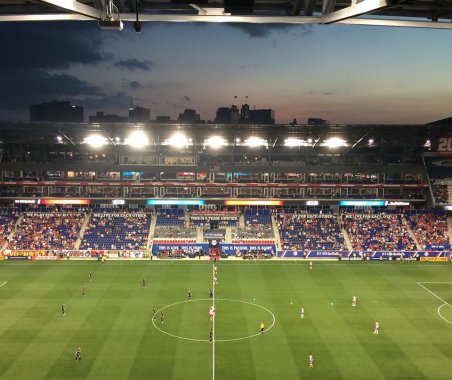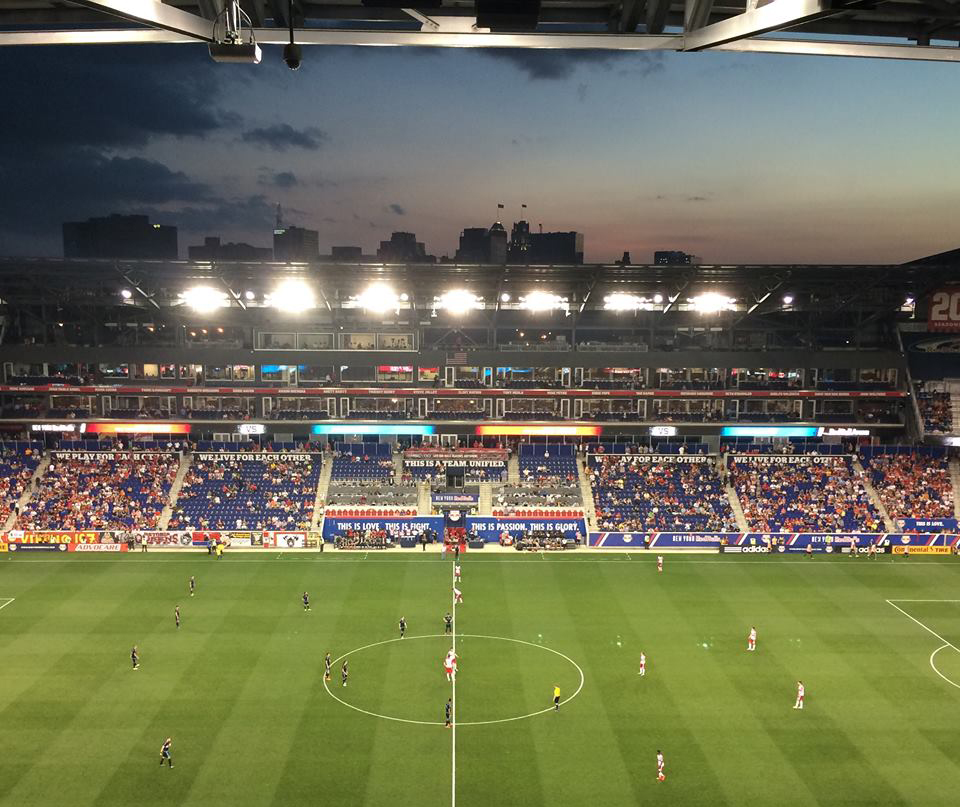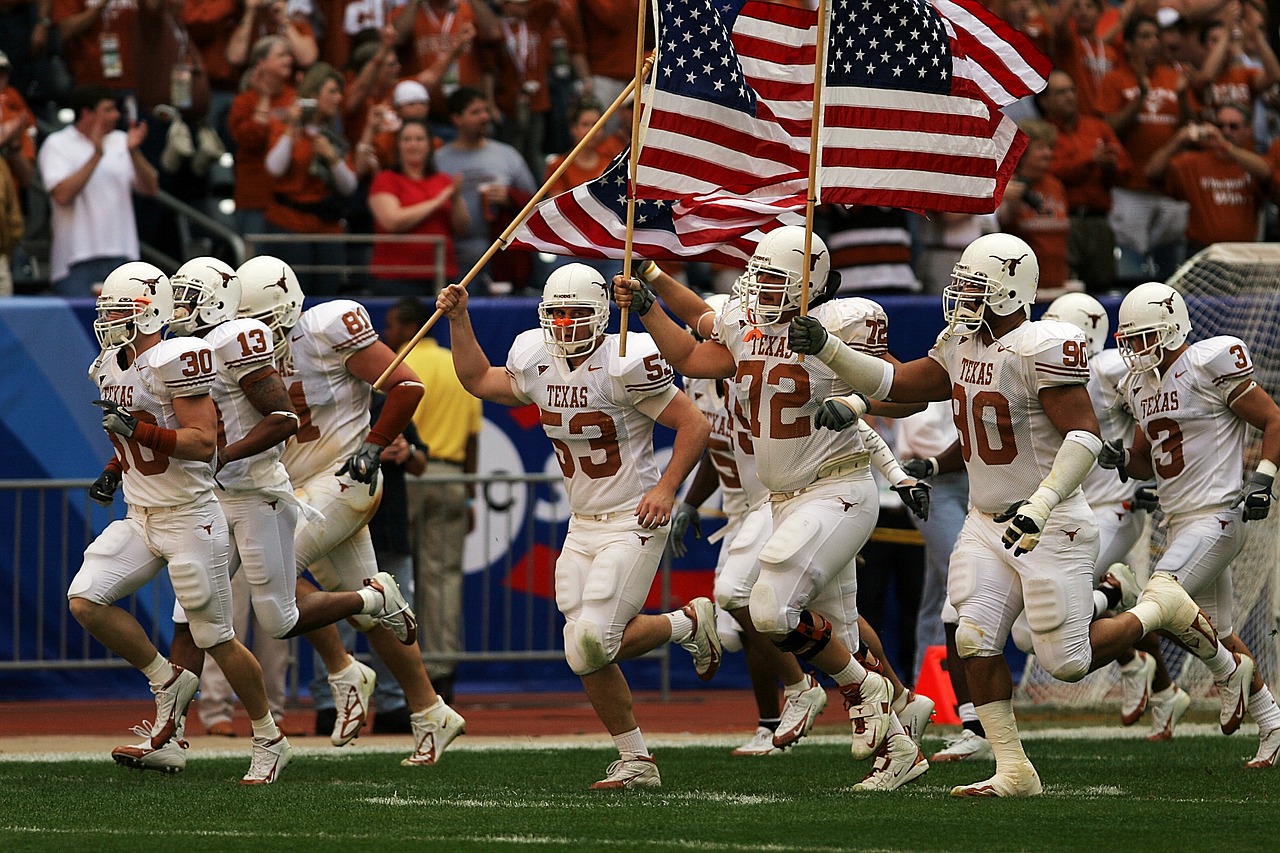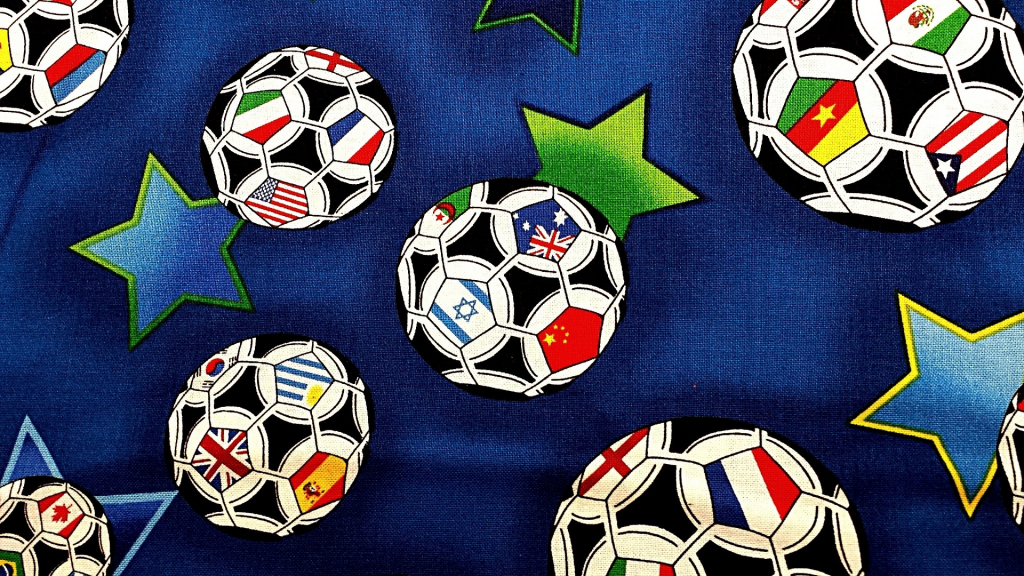Liikunta & Tiede -lehti 2-3/2018
Kirjoittaja:
Bruce Berglund
Julkaistu:
02.07.2018
The Finnish version of this article has been published in the Liikunta & Tiede 2–3/2018 magazine.
Soccer gains foothold in the USA

Football fans are nowadays younger, better educated and politically more liberal than the average population. For 18–34-year-old Americans football is more often a favorite sport than baseball.
Just yesterday one of my former students posted a photograph of her son on Facebook. The boy, about ten years old, was sitting thoughtfully at the breakfast table, chewing on the end of his pencil. Spread out in front of him was a large glossy page printed with the groups and brackets for this summer’s World Cup. More than a month before the first matches, he was already deliberating which teams would advance from the group stage.
My former student and her son live in Kansas – one of the reddest states in red-state America. Over 56 percent of Kansans voted for Donald Trump in 2016. A recent governor of Kansas instituted a conservative tax cut so extreme that the state had no money to repair roads and schools in some towns had to close their doors weeks early. Elected members of the state’s board of education have repeatedly sought to remove the teaching of evolution from Kansas schools. As someone who has lived in both Kansas and Europe, I can tell you: Kansas is the opposite of Europe. Yet even in Kansas, in the heartland of America, there are dedicated soccer fans.
And not just ten year old boys. Sporting Kansas City, which plays in Major League Soccer, had sold-out 100 straight matches through the end of the 2017 season. The club’s ground has a total seating capacity of 18,000 – 14,000 of those seats are sold as season’s tickets, with another 3000 people on the waiting to purchase season tickets. Sporting’s supporters are known throughout MLS for their dedicated engagement with the club.
Kansas City is not unique. Last year, deep in the land of auto racing and American football, Atlanta United broke the MLS single-game attendance – three times – in its first season in the league. The club led the league in average attendance in 2017, with more than 48,000 fans per game. Across Major League Soccer as a whole, total and average attendance has climbed steadily over the past decade. Now with teams in 17 cities in the U.S. and 3 Canadian cities, MLS draws more fans over a season than all of the NASCAR races or any of the minor league baseball leagues in the U.S.
Major League Soccer is not the only game in town for American soccer fans. My own two sons, ages 20 and 17, pay no attention to MLS. They watch soccer every weekend, but it’s the English Premier League. Like football fans in Finland, Hungary, Kenya, Korea, and so many other countries, they prefer to watch the world’s best league rather than their own domestic leagues. Even though neither one has ever set foot in England, each has his own club that he follows devotedly – Arsenal for the older one, and Swansea for his younger brother. I have no idea how they came upon these team loyalties, but they follow their respective clubs with just as much emotional fervor as our local baseball and American football teams. Just this past week, for example, when Swansea was relegated, my younger son cursed his adopted club and banished his Swansea cap from his sight. His twelve-year-old sister took the cap for herself (it’s quite attractive, with the swan logo on the front) and wore it to school. As soon as she walked through the door of her school, one of her classmates came up to her, pointed to the cap, and mocked: “Relegated!”
As this story shows, there are plenty of well-informed American fans of top English and European football, even here in the small Minnesota town where my family lives. Each summer since 2013, exhibition matches between some of the top European clubs have drawn tens of thousands of fans to the largest American football stadiums across the country. These matches are organized as part of the International Champions Cup, an event founded by two American NFL executives. The exhibition tours have been a huge success. In 2014, over 109,000 spectators watched Real Madrid play Manchester United at Michigan Stadium in Ann Arbor – the largest crowd ever to watch a soccer match in the United States. We can expect a similar crowd on 28 July, when Man United plays Liverpool at the stadium known as “the Big House,” home of the University of Michigan’s football team. The best ticket still available is a single seat at midfield, in the fiftieth row back – costing $190.
But while there will be plenty of American fans who watch the International Champions Cup, at the stadiums and on TV, the bigger question is: how many fans will tune in for this summer’s World Cup? For the first time since 1986, the U.S. men’s national team will not compete in the World Cup finals. Needing only a draw in their final qualification match last October, the U.S. team suffered an embarrassing 1–2 defeat to the Caribbean nation of Trinidad and Tobago. The reaction on social media showed the anger of American fans at the poor performance and the current disarray of the national team (coach Jürgen Klinsmann had been fired in 2016; his replacement, Bruce Arena, was sacked after the loss to Trinidad and Tobago). There was also a heavy dose of nationalist entitlement in fans’ reactions. A number of posts on social media raised the question: how could a nation of 300 million not find 11 guys to defeat an island country of 1.3 million?
Some would say that the Americans’ absence from the World Cup comes at the worst possible time, at least from the perspective of the sport’s development in the United States. At the 2014 tournament in Brazil, the U.S. national team had advanced to the knockout round from what was regarded as one of the most difficult groups in the field. After an opening win over Ghana, who had knocked the U.S. from the 2006 and 2010 tournaments, the Americans faced Portugal. Improbably, the U.S. team stayed with a team many predicted to compete for the championship. Only a Varela goal in extra time, on a brilliant pass from Cristiano Ronaldo, earned a draw for Portugal. A loss to Germany in the final match of the group stage did not affect the group results. The U.S. advanced to the round of 16.
The thrilling match against Portugal, featuring the dazzling play of goalkeeper Tim Howard, one of the few Americans who has played regularly in the EPL, was a moment when the World Cup emerged as a sporting event that could capture the attention of casual viewers in the U.S. Over 24.7 million people watched the afternoon match on television – the largest television audience ever for a soccer match in the U.S. There were watch parties among neighbors (I attended one). In Chicago, some 10,000 people came to Grant Park to watch the match on giant screens. Leading up to the match, Facebook reported that there were more interactions for the World Cup than there had been for that year’s Winter Olympics, Super Bowl, and Oscars ceremony combined.
Although the U.S. team bowed out of the tournament in the next round, losing 1–2 to Belgium, World Cup fever had risen to new heights. The 1994 World Cup held in the United States had been a curiosity for many American fans. Even in 2006, ESPN assigned a baseball announcer to give the play-by-play commentary for the network’s World Cup coverage. Those viewers with a knowledge of the sport responded angrily. ESPN’s coverage became more sophisticated for the 2010 tournament in South Africa, and ratings increased by more than 40 percent over the previous World Cup in Germany. That year’s final match, between Spain and the Netherlands, drew 24 million viewers. In Brazil, ESPN pulled out the stops, broadcasting 290 hours of coverage. By that time, due largely to ESPN’s efforts in promoting the event, the World Cup was a valuable prize in the U.S. sports broadcasting market – so valuable that Fox Sports quadrupled the amount ESPN had paid to FIFA and secured the American broadcast rights for 2018 and 2020, for $425 million.
The article continues after the picture.

Picture is from the match of New York Red Bulls vs. New York City FC, at the Red Bull Arena, New Jersey 2015. Photo: Riitta-Ilona Hurmerinta.
But with the U.S. national team sitting at home this summer, has Fox Sports dropped a bundle of cash for an event that will be a ratings dud – at least a dud in 2018? To answer that question, it will help to look at where this American interest in soccer has come from.
Of course, people in Finland would not associate the United States with football, unless it’s the kind with hulking men in pads and helmets. Surveys of sports participation support this impression. In 1970, the most popular sports in American high schools were American football, basketball, baseball, and athletics. Soccer was played by only 49,000 American students, compared with more than 900,000 boys who played football. Later that decade, however, soccer began to make inroads into the American sports landscape. The North American Soccer League reached the height of its popularity in the late 1970s, when ageing international stars like Pelé, Franz Beckenbauer, Johan Cruyff, and George Best signed with clubs like the New York Cosmos, Los Angeles Aztecs, and Washington Diplomats. With professional soccer on American television and NASL clubs drawing large crowds at stadiums, youth soccer programs also appeared. I made my soccer debut at this time, but lasted only a few matches. The sport demanded too much running, and unlike with my favorite sports, football and hockey, I could not hit anybody.
The NASL lasted a bit longer than I did. Most teams folded in the early 1980s or transformed themselves into that curious American creation: professional indoor soccer, played inside the boards of a hockey arena, with artificial turf covering the rink. But soccer as a participatory sport was slowly taking root. In 1980, more than 130,000 boys and 29,000 girls were playing soccer in American high schools, mostly in California and the northeastern states. A decade later, more than 200,000 boys and 100,000 girls were playing the sport in their high schools. Then, during the 1990s, youth soccer became a widespread activity across the United States. Parents recognized that the sport was easy to learn, required little initial investment, and that it was a good activity for both girls and boys. The number of youth players in the United States, at all levels, nearly doubled between 1990 and 2000, reaching just over 3 million.
Yet even as participation numbers climbed, soccer still did not attract the American sports fan. There wasn’t enough scoring, went the familiar argument. Soccer was boring. Never mind that an American fan could watch a 1–0 baseball game and call it a masterpiece, or that a three-hour NFL game has a total of ten minutes of actual game action, with the rest of the broadcast showing coaches talking into their clipboards, referees consulting with each other, and fat players in tight pants standing around. The real issue was that soccer was foreign. The sport presented an image of the athlete completely at odds with the American ideal of masculinity. Soccer players are small, thin, pretty, and wimpy (flopping in soccer is a perennial American complaint). In contrast, American athletes embody an ideal of masculinity that is large, muscular, ruggedly handsome, and tough. Who conquered the frontier, plowed the prairies, and built the skyscrapers? It sure wasn’t men who looked like Cristiano Ronaldo.
The article continues after the picture.

Another strike against soccer was that Americans weren’t that good at it. American fans want to watch American athletes win. Yes, that’s the case in other countries as well. This is why the Finns would rather watch hockey than soccer, or why Hungarians prefer water polo to basketball. But American sporting nationalism has a distinct cast, shaped by the idea of exceptionalism long ingrained in the national identity. Alone among the nations Americans refer to the champions of their domestic sports leagues as the world’s champions. The top two teams in American baseball play in the World Series, even though many other nations play baseball. The two teams in the Super Bowl play for the world championship, even though most other nations don’t care about American football. American fans take pride that their leagues are the best, whether in baseball, basketball, or hockey. The world’s best athletes play in the NHL, NBA, and Major League Baseball. Soccer in the United States has drawn its largest crowds when the world’s best – whether Pelé with the New York Cosmos, or Ronaldo with Real Madrid – have come to our shores.
A correction: there are American soccer players who are the best in the world.
If there is an essential event in American soccer history, it is not Pelé’s final match in 1977 before 77,000 fans, or David Beckham joining the LA Galaxy in 2007, or the World Cup draw against Portugal in 2014. Instead, it is the victory of the U.S. Women’s National Team at the 1999 World Cup. The shootout victory over China at the Rose Bowl stadium in California made national heroes of the women’s team and provided one of the iconic images of American sports history: Brandi Chastain celebrating her winning goal. The image of a fit, muscular young woman, stripped down to her sports bra and raising her fists, offered a new model of the American soccer player. They are strong, they are talented, and they win. For subsequent Women’s World Cups, matches of the U.S. team have drawn large television audiences. During the 2015 tournament, fans at Major League Baseball stadiums gathered around televisions in the concourse to watch the U.S. women play their matches in Canada. Over 25 million American viewers tuned into that year’s final, in which the U.S. defeated Japan for their third World Cup title.
The success of the American women soccer players has been significant both for women’s sports and for soccer in the US. Prior to the 2015 Women’s Women Cup, the American women led a protest against FIFA over the use of stadiums with artificial turf in the tournament, something FIFA would never allow for the men’s World Cup. In 2016 members of the team filed a law suit against the US federation for wage discrimination. The players argued that they deserved the same pay as their male counterparts since they have been far more successful on the pitch. These positions have not brought the women soccer players the same criticism that has been directed at other American athletes who mix politics and sport. Nearly all members of the women’s national team are white and university-educated, coming from middle-class or affluent families. Whereas male soccer players are seen as somehow foreign, women players are “our girls,” embodying the kind of young woman many Americans hope their daughters will emulate.
With millions watching the US women’s team on television, and further millions bringing their own daughters – and sons – to Saturday-morning matches at the park, Americans have started to understand soccer. When I used to watch my own daughters and sons play, I marveled at how the other parents had become proficient in the sport’s distinctive language, adopted from English football. Americans can now appreciate a play like Abby Wambach’s equalizer against Brazil in the 2011 World Cup quarterfinal, coming on Megan Rapinoe’s brilliant ball from 45 yards out, saving the U.S. team’s chances in the 122nd minute. Like a Tom Brady touchdown pass in the closing seconds or a Steph Curry three-pointer at the buzzer, this was a moment of extraordinary athletic skill and cool athletic composure.
An understanding and appreciation of soccer is now more widespread. The first generation of young Americans who grew up playing the game in large numbers are now bringing their own children to Saturday-morning matches. Meanwhile, Grandma and Grandpa have finally figured out what soccer is all about. But does this increase in soccer participation explain the recent increase in soccer fandom? Only in part. As we know, not all participants are fans of their sport, and not all fans played the game.
First of all, we can recognize that a large number of Americans are indeed soccer fans. With polling data from the Gallup company, we can give some context to the attendance figures for MLS clubs and the large crowds at the International Champions Cup matches. According to Gallup’s annual survey of sports fandom in the US, the percentage of Americans who identify themselves as fans of professional soccer has increased from 13 percent in 2006 to 28 percent in 2017. The 2017 survey also asked people to name their favorite sport. Seven percent of respondents identified soccer, more than those who named hockey (4 percent) and close to the percentage of people who regarded baseball as their favorite sport (9 percent).
We can point to a few specific factors for this rise in soccer fandom. One factor is that more American university students are studying abroad. Since 2000, the number of Americans going to school overseas has more than doubled, now with more than 325,000 students each year leaving the country. Over 70 percent of these students go to countries in Europe and Latin America where football is prominent. As I can attest from years as a professor, many return with a new appreciation of the game as a spectator event and cultural phenomenon. This was certainly the case for me: my awakening as a soccer fan began in 1998, when I watched the World Cup as a student in the Czech Republic.
Another factor has been the popularity of the FIFA series of video games. Since its first release in 1993, EA Sports’ FIFA has sold more than 100 million copies, making it the biggest-selling sports video game in history. The game has been just as popular in the United States as it is around the world. The latest edition in the series, FIFA ’18, sold more than two million copies in North America. Studies have shown that, in general, gamers who play a particular sport video game do not become fans of the sport. The exception has been FIFA. According to a 2014 study, 34 percent of American gamers who regularly played FIFA said they became a soccer fan after playing the video game. The study’s author explained: “As people started playing the ‘FIFA’ game, they came to know the teams, the players and the game. It became the front door to fandom.”
The influence of video games, international study, and the growth of youth soccer matches the survey data about American soccer fans. Fans of professional soccer in the United States tend to be younger, better educated, and more politically liberal than the population as a whole. More Americans between the ages of 18 and 34 describe soccer as their favorite sport than those who prefer baseball. Parents of young children are twice as likely to consider soccer their favorite sport as other American adults. American football remains the most popular sport in America, by far. But support for world football is rising – and the demographic markers are in its favor.
I saw this last summer when I attended matches of a men’s club in the fourth tier of US soccer. Among the 3 000 fans in the small neighborhood stadium, there were kids in their youth team uniforms, teenage boys trying to impress teenage girls, young parents with new babies, hipsters with long beards, couples in their 50s and 60s – there were white people, black people, Asian Americans, and Latinos. It was a cross-section of American society. But at the same time I saw fan behavior that I would never see at a minor league baseball game or a college football stadium in the US. Members of the official fan club acted like fans in England or Mexico, singing and chanting throughout the match, pounding on drums, holding their club scarves over their heads. Fans young and old wore the shirts not only of the local club but also of their favorite European clubs and national sides from Latin America and Europe. Their shirts had names like Messi and Neymar on the back – the best players in the world, who did not play in the United States. These American fans wanted an experience that “traditional” American sports do not necessarily offer. They wanted to have an experience that was rooted in their community and at the same time was larger than their community, and larger than America.
The article continues after the picture.

When this year’s World Cup begins, plenty of fans in the United States will tune in. In all likelihood, the tournament’s final match will draw just as many television viewers as the US men’s team match with Portugal in 2014 or the women’s team victory in 2015. They will tune in to see the best players and the best teams in the world, out of a love for the sport rather than a partisan support of their national team.
Indeed, the more important question is not how will American fans manage without their team in the World Cup, but rather how will football manage without American fans. In 2014, there were more fans at World Cup matches from the United States than from any other country, except Brazil. Americans bought more tickets than fans from Argentina, Germany, and England – combined. There will be Americans in Russia this summer, but certainly not as many had their team qualified for the tournament. It might be the case that FIFA and the Russian organizers discover that football needs America more than they thought.
Bruce Berlund
Professor
The Finnish version of this article has been published in the Liikunta & Tiede 2–3/2018 magazine.
Professor Bruce Berglund serves as a Professor of History at the Calvin College in Grand Rapids, Michigan. He is well versed in the history of Eastern Europe and has Swedish ancestors. Currently, Berglund prepares a book about the history of world ice hockey and the globalization of sport. It will be published as part of the University of California Press series "Sport in World History." Berglund visited Helsinki in March 2018 to become acquainted with the Finnish ice hockey history.
More about professor Bruce Berglund:
Tutustu Liikuntatieteellisen Seuran julkaisemaan Liikunta & Tiede -lehteen ja tilaa lehti itsellesi tai lahjaksi! Voit myös liittyä LTS:n jäseneksi, jolloin saat Liikunta & Tiede -lehden jäsenetuna ilman erillistä lehtimaksua. Tilaajille ja LTS:n jäsenille lehti on tarjolla myös näköisversiona verkossa.
